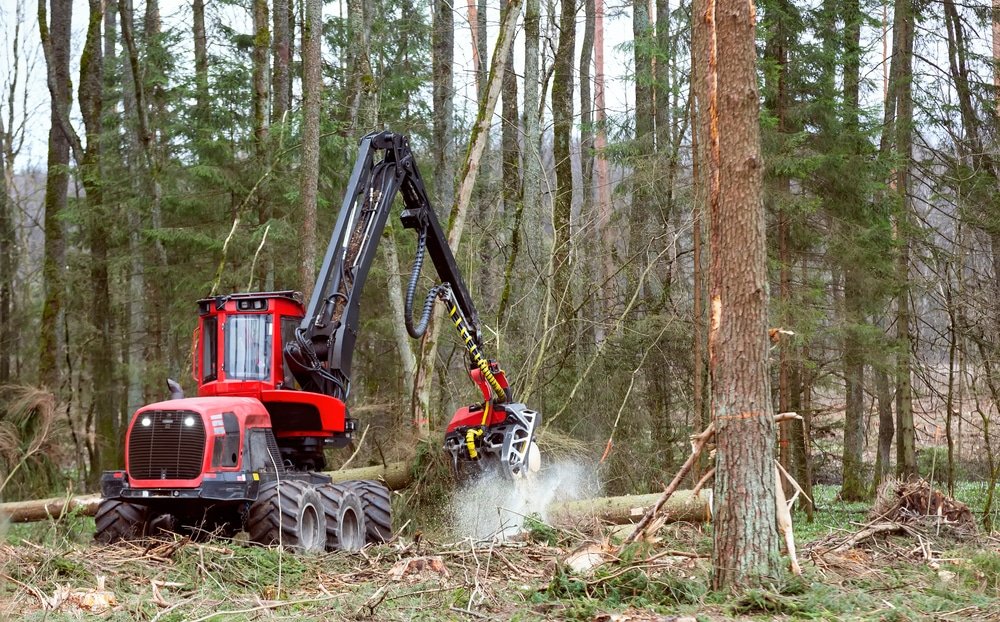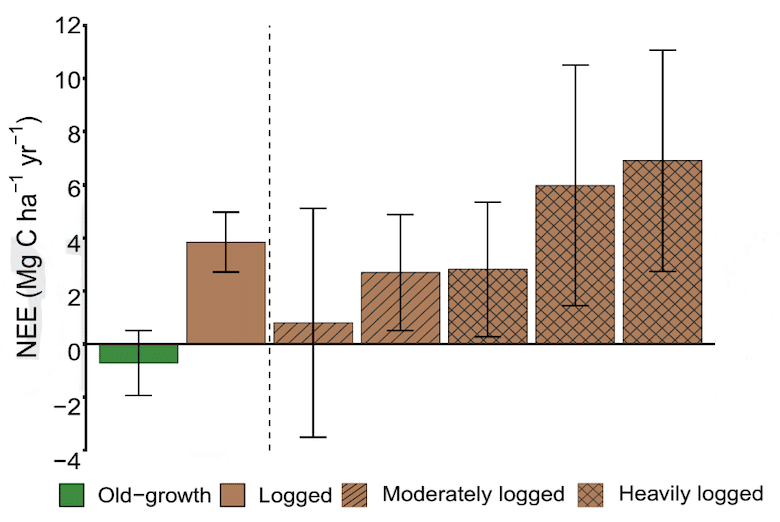A new study shows that logged and degraded tropical forests are a net source of carbon emissions for at least 10 years, meaning the carbon they emit is more than what they absorb.
New young trees taking the place of logged ones for timber are thought to suck in more CO2 than what’s lost in logging. But that’s not always the case, according to new research.
One author said carbon sequestration is outweighed by the high emissions from soil organic matter and decaying wood. Thus, it’s a disbelief that logged forests continue to take in more carbon than they put out.
An expert informed about the study noted:
“The newly sequestered carbon will not be equitable to the original carbon sink and could not compensate for carbon losses due to logging. On the other hand, logging could increase heterotrophic activities such as decomposition and soil degradation, worsening the carbon balance in a forest ecosystem.”
The recent paper is published in the Proceedings of the National Academy of Sciences. It was part of the Imperial College London’s Stability of Altered Forest Ecosystem (SAFE) project.
Forests: No Longer Carbon Sinks?
Land sequesters about 30% of global GHG emissions, making it a great carbon sink. And tropical forests are an important component of that carbon sink.
- The world’s largest tropical rainforest, the Amazon, stores a large amount of carbon and houses at least 10% of the world’s biodiversity.
Tropical forests are a critical element of the global carbon budget. It refers to the highest level of global net emissions allowed to limit global warming to a certain level.
According to an older paper, tropical forests sequestered 15% of all CO2 emitted by humans between 1990 and 2007. But the new study finds that the carbon sequestering abilities of tropical forests are declining.
A previous study also showed that tropical forests are no longer carbon sinks because of deforestation and land degradation.
In the case of the forests in Malaysian Borneo (the study site), the researchers examined both intact and degraded forest plots to measure the CO2 emissions and sequestration. This forested area faces heavy degradation and deforestation.
A degraded forest hasn’t been fully cleared but is heavily affected by logging. On the other hand, deforestation refers to the clearing of a forest.
The team compared the net carbon exchange of a logged forest area with nearby unlogged areas. Using two different methods, the authors concluded that the logged forests are net carbon sources for at least a decade as they recover.
- By calculating plant growth and respiration rates, the scientists found that the cleared area was a carbon source on 99% of the 455 studied days.
Overestimated Carbon Sequestration?
Net Ecosystem CO2 Exchange at Logged & Unlogged Sites
The chart above shows the average net ecosystem CO2 exchange at six unlogged and logged sites. It’s measured as millions of grams of carbon per hectare per year.
A positive value indicates a net source of carbon emissions.
Overall, it says that heavily logged plots (in brown hatched) are a bigger CO2 source than the more moderately logged (in brown striped) and unlogged sites (in green).
- The brown bars show the net emissions from logged areas. While the green bar stresses that intact, old-growth forests are carbon sinks.
Logged Forests as Net Carbon Source
The authors point out that previous research focused on how much CO2 new trees store. But generally, they didn’t consider the overall carbon budget. They fail to account for significant carbon sources such as dead wood and soil.
On the contrary, the new paper found that a major source of CO2 emissions in logged forests is decaying or rotting parts of a tree. They’re damaged during the logging process.
The new findings mean that the carbon sequestration rates of recovering tropical forests may be lower than estimated. In other words, there may be an overestimation. Dr. Terhi Riutta, the lead author remarked:
“That’s how logging has often been justified: that you are replacing something that is old, that is not growing very much, by something younger that is growing very fast. But it’s not the whole truth at all.”
If true, this poses a serious concern because “logged tropical forests are counted as important carbon sinks in global carbon budgets due to the woody biomass they regain when they regrow after disturbance”.
The research concludes that their studied area and data broadly represent the wider logged tropical forest ecosystems.
Other experts on the matter said that the findings could help improve estimates of carbon emissions from forest degradation. If so, it can aid in mitigating and avoiding emissions from logged forests.


